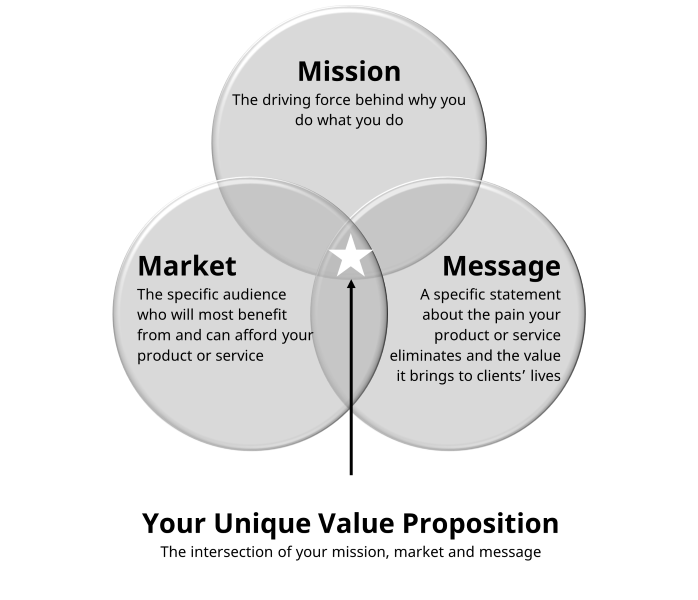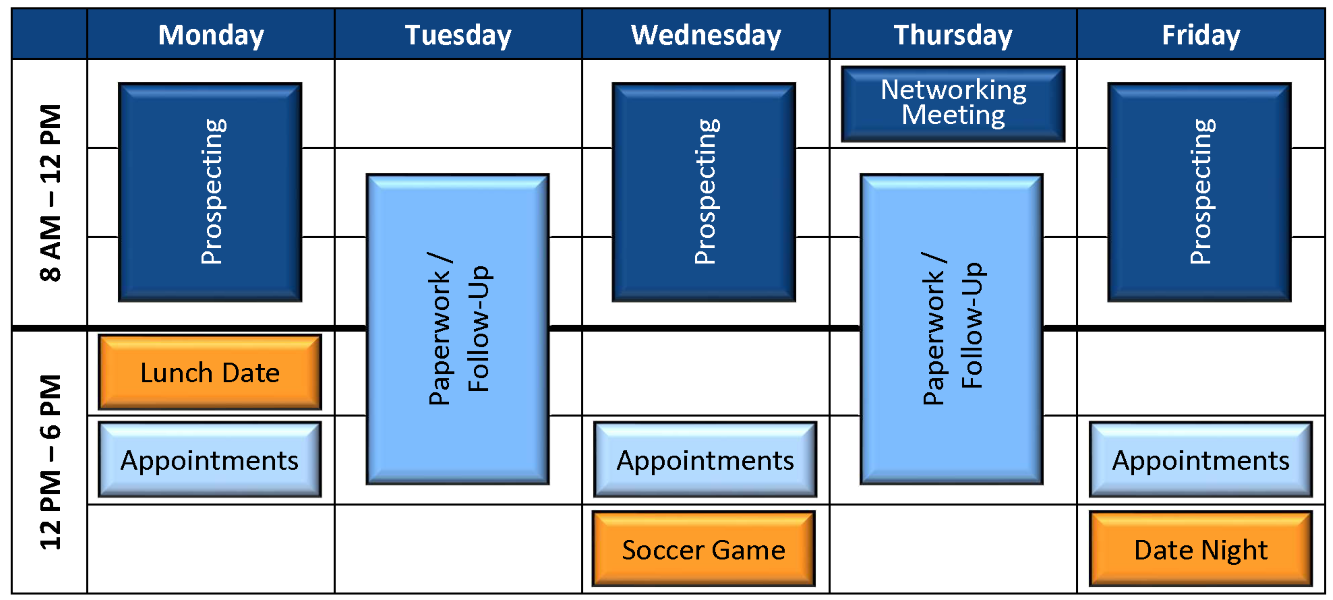What is your biggest challenge in bringing in business?
Notice that phrase: bringing in business. Not sales. Sales is an important part of bringing in business, but it’s just one part. That’s important, because a lot of people tell me they hate sales and will do anything to avoid doing anything remotely considered “sales.”

That’s not irrational. I think most of us, when we think of selling, think of a pushy salesperson who’s only interested in closing the sale, not about what we want or need as a buyer. If we dislike being on the buying side of that, why would we ever want to be on the selling side?
But we do need to bring in business. If we don’t, we won’t have any of those wonderful customers to deliver our amazing product or service to—and that’s why we got into business, isn’t it? To deliver an amazing product or service that we’re passionate about because it has a positive impact on people’s lives.
So how do we sell without “selling”? We do it by following the 7 Steps to Step Up Your Sales Success.
Step #1. Embrace the right mindset.
As I mentioned above, a lot of people have a negative response to the idea of selling because they've had a bad experience with selling or salespeople. Others don't think they can be successful at it because they don't have the “salesperson personality”—which, let's be honest, is not a personality type most of us like.
This is why mindset is vital. When you stop thinking about how you can sell to someone and start thinking about how you can serve them, it changes everything. Think about selling not as a one-sided activity where you’re pushing a prospect to buy by touting the bells and whistles of your product or service, but as a collaborative process where you’re learning about and understanding a prospect’s needs and challenges and delivering value through solutions.
Serving doesn’t mean you’re not closing the deal; it’s actually the most effective way of closing the deal. When you serve someone, you develop a relationship with them: You get to know them, and you offer a solution that improves their lives. In doing so, you create a raving fan who wants to work with you again and who—very importantly—is eager to refer you to others. That, in turn, brings in other high quality prospects who are already excited to work with you.
Selling by serving does require intention. To do it well, you have to supercharge the power of your mission, market and message.
#2. Supercharge the power of mission, market and message.
Let’s start with some definitions:
- Mission is the driving force behind why you do what you do, the purpose and passion you have for your profession.
- Market is the specific audience who will most benefit from, can afford and wants to buy your product or service.
- Message is the specific statement about the pain or challenge your product or service eliminates and the value it brings to clients’ lives.
Together, these three elements make up your Unique Value Proposition.

A UVP itself is a statement that expresses the value of your service in a clear, compelling statement. It tells a potential client how you will solve their problem and how you will do it better than anyone else. There’s no room for business-ese here; you want a statement that is clear and to the point.
Let’s take an example: If you own a pest control company, you might be tempted to say: “I sell pest control services.” So what? Lots of people sell pest control services. One of my team members gets two or three pest control people knocking on her door each week.
A more effective UVP would be: “We protect your home, your family and your health, using child- and pet- safe approaches guaranteed to eliminate and control pests.”
When you believe in your UVP and communicate it clearly, you will attract the kind of clients you love to work with and whose lives you can have the biggest impact on.
#3. Know your metrics.
We’ll talk about how to attract those amazing clients in the next step, but first we need to talk numbers. There are certain numbers you need to have a good grasp of so that you truly understand the financial health of your business and so that you know how many clients you need to attract in order to meet your business and life goals.
The number I want to talk about here is Number of Weekly Appointments. This number tells you how many appointments you need to make each week in order to close the number of deals that enables you to meet your revenue goal. Here’s the math for it:
Revenue Goal ÷ 7 Average Sale = Number of Deals Needed
Number of Deals Needed ÷ Closing Ratio = Number of Weekly Appointments
If you’re not currently making the Number of Weekly Appointments you need to reach your revenue goal, you can:
- Increase your average sale to bring in more money with fewer clients
- Improve your closing ratio by ensuring that you’re meeting with prospects in your target market
- Develop a more effective closing process focused on serving, instead of selling
- Identify and employ more effective strategies for bringing in business
For more on numbers, check out these two blog articles: Are You Gambling with the Life Of Your Business?, specifically the Make More Money section, and Your Business’s BMI and Other Numbers, specifically the Numbers of Financial Health section.
#4. Identify methods for bringing in business that work for you.
The number one reason a business doesn’t bring in enough money is not because something is wrong with the product or delivery. It’s because the business isn’t getting in front of enough of the right kind of people. That is generally because you don’t have enough strategies to bring in business, or you’re not using them on a regular and consistent basis because they’re not a good fit for you and your business.
Good fit is key. If a strategy doesn’t make sense for your industry or your business, it won’t attract your target market of people who want to buy and can afford to buy your product. If it isn’t a good match for your personality, you won’t use it.
A good rule of thumb is that you should identify 8-10 methods and focus on implementing 2-3 at a time. Having those additional strategies in your pocket enables you to mix it up when you need to; there may be methods that work better at certain times of the year or during upswings or downswings in business. And occasionally, a method just stops working the same way it did. You’ll know when this happens because you’re tracking your Number of Deals and your Closing Ratio, and you’ll be able to pivot easily to the other methods you’re keeping handy.
For more on finding strategies for bringing in business that work for you, check out my blog Do You Have Enough Money Coming In?
#5. Manage your time.
Which is more important, bringing in business or getting the work done? Trick question! The answer is both. Most people's inclination is to focus on getting the work done; after all, that's where the revenue comes from. But if you're not bringing in business on a regular and consistent basis, you'll run out of work to do, which means no more revenue.
My favorite tool for managing your time is Block Timing. This is where you focus on doing one type of work at a time in order to bring your sharpest attention to the task. You can read more about Block Timing, other time management tools and the myth of multitasking on my blog Find Time by Saving Time, but here’s a diagram to get you started:

If you prefer listening, check out my podcast Time Management Tips and Tricks.
One important part of time management is self management. What that means is looking at and responding to our behavior and mood throughout the day. We’ve all had those days when we get more done than we thought physically possible, and those days when we can’t seem to get anything done. That’s in part because our energy levels fluctuate throughout the day. When we don’t respect that natural cycle of alertness and drowsiness, that’s when we find ourselves nodding off, making mistakes and not being able to think creatively.
For a few days, make notes of when you feel more and less alert. Identify tasks that require high energy and schedule those for those high-alert times. Also consider ways to boost your energy when you need to, by taking a quick nap, taking a walk to get some fresh air or having a healthy snack. All of these are great ways to recharge your brain and body.
#6. Maintain your momentum.
Taking the previous steps we’ve talked about makes stepping up our sales success so much easier. But the world is an unpredictable place; sometimes the economy gets in our way, or life does, or we slip out of that positive mindset and get caught in a rut of pessimism.
That’s when you need to tap into the power of your team. I don’t mean your team of employees—though they are a great resource. I mean the people who are in the same boat as you: other business owners, in your industry and beyond.
I speak at a lot of conferences, and I find that one of the best things about conferences is what happens outside the official events. That’s when you have those informal conversations with other attendees in the hallway, during lunch, at the hotel bar. Whether it happens there, through a mastermind, or in association or chamber meetings, connecting with people facing the same challenges you are is an amazing source of new ideas for bringing in business, as well as for running and growing your business. Those people can also provide support and encouragement—and you can do the same for them. It's those kind of mutually beneficial, “we’re in this together” relationships that help you maintain your momentum.
#7. Get a mentor or coach.
Of course, there are times when even the best peer relationships aren’t enough. Times when you need someone who isn’t in the trenches with you. That’s when you need a mentor or coach.

If you’ve been listening to my podcast or reading my blog, you’ve heard this message before. I can’t repeat it enough: Having a coach or mentor is one of the single best ways to take your business to the next level—and that definitely includes stepping up your sales success.
Coaches and mentors are people who have more experience than you do and can offer a bigger picture perspective and an outside eye. Studies show that the average business grows 70% when the owner has a coach, so when you’re ready to grow grow grow, that’s your go-to. In my podcast How to Find the Right Business Coach for You, I talk about when you should get a coach, how to vet and choose a coach, and how to make the most of your coaching relationship. I also share what to avoid when looking for a coach. My blog Why I Love My Coach is also a good resource.
I am a coach, so I would be honored if you would consider me. Please
You Can Do It!
Stepping up your sales success doesn’t have to be painful. It doesn’t even have to be hard. It just takes these 7 Steps:
- 1. Embrace the right mindset.
- 2. Supercharge the power of mission, market and message.
- 3. Know your metrics.
- 4. Identify methods for bringing in business that works for you.
- 5. Manage your time.
- 6. Maintain your momentum.
- 7. Get a mentor or coach.
If you follow these 7 Steps, you’ll find that it becomes a natural part of what you do each week; you might even find that you enjoy it, either because the process isn’t as bad as you feared or because it’s bringing in more of the kind of business that makes you excited to jump out of bed every morning. You’ve got this!
(I really do mean that: You’ve got this! But if you’d like to get started by doing Step #7 first, please




































































